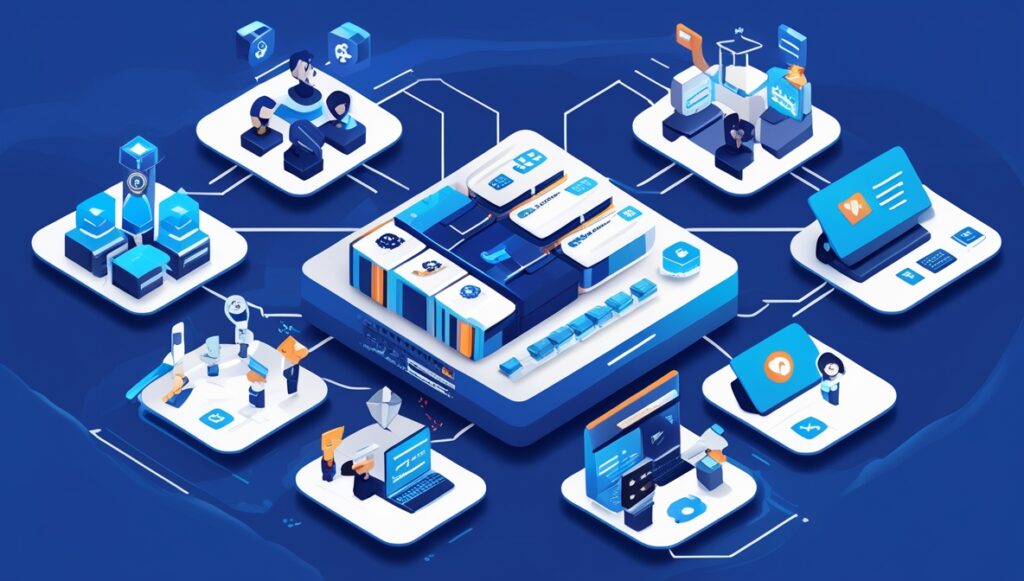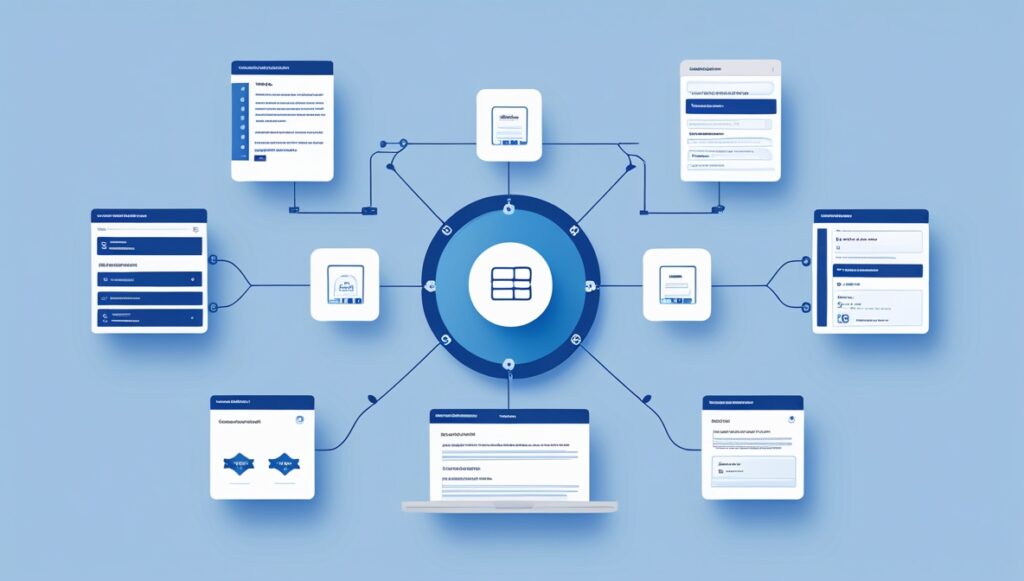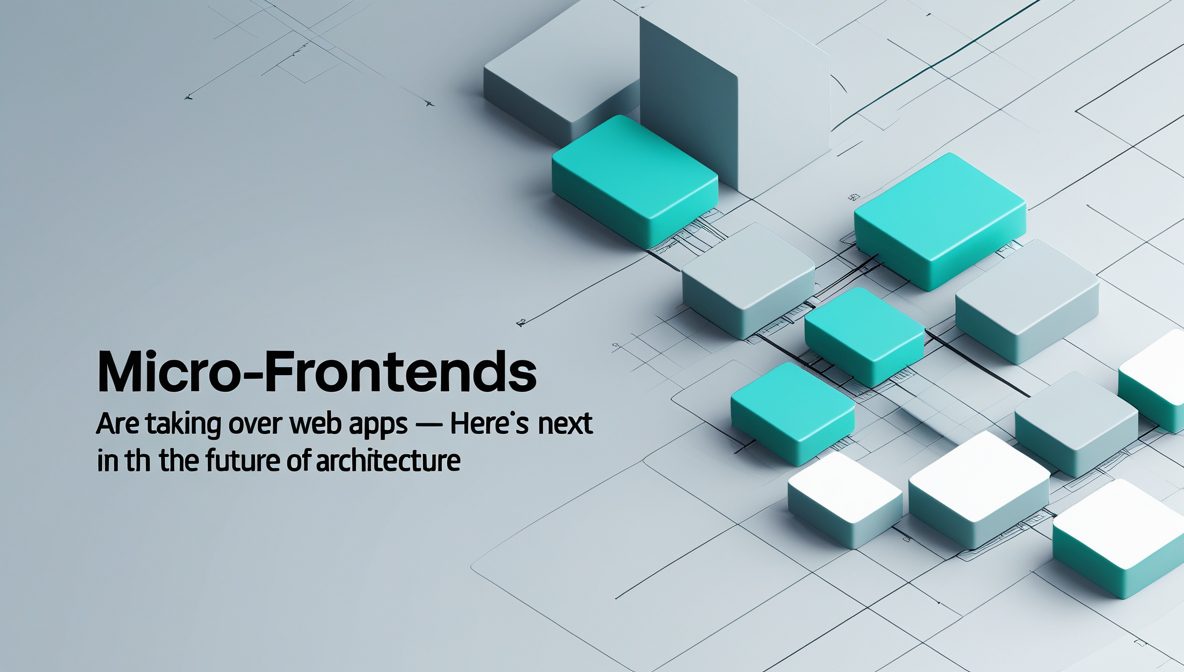Many web applications today are more sophisticated because users anticipate more and new features are being launched. Developing a frontend in the traditional way can be hard to catch up with all the changes, causing the code behind each release to take longer to build and become harder for developers to manage. The concept of Micro-Frontends is transforming how developers build and maintain web apps by breaking the frontend into smaller, independent pieces. Since each smaller module can be handled independently, it is safer and more flexible to use.
As the web continues to evolve, Micro-Frontends are becoming more common and are expected to play a significant role in the future of web architecture. The trend goes along with new development principles that highlight setting design by modules, collaboration and continuous deployment. This approach allows companies to adjust to new trends promptly and offer users an improved experience with fewer problems.
Understanding the Micro-Frontend Concept

The idea of splitting frontend development into smaller, manageable parts is not entirely new, but Micro-Frontends formalize this practice into a clear architecture pattern. Rather than writing the frontend code in one place for everyone to use, each independent module is created by its own group of people with its own storage. Every small application is focused on a particular feature, using its own code and deployment.
As a result, teams can select the most suitable technologies for their module depending on its requirements or who is working on it. Such an approach reduces the likelihood of conflicts between teams and ensures it’s easier to manage the code. As a result, the frontend becomes simpler to grow, fix and modify, just like microservices do for the backend workings.
Developing Frontend Separately
One major advantage of Micro-Frontends is the decoupling of development efforts. If teams focus on specific features, they can work on them separately and avoid affecting the rest of the team. As a result, small changes can be made and released more quickly, since developers are not tied to coordinating them with the frontend.
As a result, teams can add innovative tools or systems to separate modules without requiring a major change. Because it’s flexible, the news application can be updated faster and maintained efficiently. It becomes much simpler to handle errors when they happen in a distinct module compared to a cluttered monolith.
Independent Deployment and Updates
Typically, frontend development involves combining every part of the website into one release, making updates more cumbersome and riskier. With Micro-Frontends, each module can be deployed independently, allowing teams to push updates or fixes for a specific feature without touching the rest of the app. As a result, servers spend less time down and become more reliable.
Since only a single module is installed when using independent deployment, problematic changes can be reversed easily and quickly. It enables small groups to take charge of all stages of their features, helping them become more responsible and effective.
Scaling Teams and Projects Effectively
With larger applications, it becomes more difficult to manage the team and coordinate their activities. Micro-Frontends offer a way to scale frontend projects by allowing multiple teams to work on different modules independently. Because of this, team members spend less time discussing and arguing, allowing them to move ahead more quickly.
Assigning autonomy to teams allows them to take ownership and pay more attention to their micro-frontend tasks. If a new developer concentrates on a single module, it makes their onboarding less complex. This method also ensures that companies can continue working with a high development pace which plays a crucial role in meeting business requirements.
The Technical Building Blocks of Micro-Frontends

Implementing Micro-Frontends requires choosing appropriate technical solutions to ensure that independently developed modules can work together smoothly. The design of the architecture may be quite different based on what the project requires, who is working on it and what its goals are. Several patterns and tools have emerged to help integrate micro-frontends while maintaining usability and speed.
Webpack commonly uses web components, module federation, dynamic imports and iframes. There are pros and cons for each approach in terms of their complexity, separation from other networks and compatibility. Using the right building parts ensures that the architecture is both sustainable and efficient.
Web Components and Custom Elements
Web components allow developers to build independent UI elements that can be used with many frameworks and web browsers. Building micro-frontend modules is easier using these custom HTML elements, as they are designed to include both content and presentation all in one. With web components, groups can create smaller pieces that blend easily into their projects. It ensures that styles or scripts don’t clash between different sections of the code. It also makes sure the UI is consistent, despite the use of differing technologies in the frontend.
Module Federation and Dynamic Imports
Using Webpack 5 and similar tools, a large app can remotely fetch code for smaller parts via module federation. This lets teams build micro-frontends as separate projects but combine them dynamically in the final app. With dynamic imports, only the files needed by the user will be downloaded, improving the app’s overall performance. With the help of all these methods, micro-frontend systems are more efficient and easier for developers to use.
Using iframes for isolation
iframes offer a way to fully isolate micro-frontends by embedding them as separate browsing contexts. It allows each module to operate privately and keeps them apart from other modules. Though iframes are very secure and put things in their own safety zone, this does lead to some challenges. Even with some downsides, using iframes can still be useful when it’s essential to completely isolate the user.
Challenges and Best Practices for Micro-Frontends

Despite the benefits, Micro-Frontends introduce new complexities that teams must address. Failing to plan can cause users to experience inconsistency, the project to slow down and coordinate the project to be both difficult and time-consuming. Understanding the issues and using the best methods can help you achieve success. Teams ought to ensure their designs are consistent, that assets are loaded efficiently and that everyone can communicate effectively. These areas are crucial to delivering a smooth, unified app experience while enjoying the development advantages of micro-frontends.
Maintaining consistent UI and UX
If different teams make their own modules, the user interface can become confusing. Relying on several different animations or interaction concepts might confuse your customers and harm the company’s image. This is why both design systems and component libraries must be shared. All teams use these resources because they share common styling, guidelines and components. If you review and communicate regularly with other teams, you’ll be able to notice any inconsistencies earlier.
Managing Performance Overheads
Splitting frontend code into micro-frontends often increases the number of HTTP requests and bundle sizes, potentially harming load times and responsiveness. If performance issues remain, the benefits from the architectural plan are lost. Best practices include lazy loading micro-frontends only when needed, caching static assets aggressively, and minimizing shared dependencies to avoid duplication. Regularly watching performance gives teams time to tackle bottlenecks early, making the application better.
Orchestrating Communication Between Modules
Micro-frontends sometimes need to share data or trigger actions across boundaries. To ensure high maintainability, it is necessary to create effective, loosely coupled communication. Teams use event buses, shared state management, or custom APIs to facilitate interactions between micro-frontends. It is desirable to limit communication and be direct in what you say to avoid complex links that could trigger bugs and slow progress.
What’s Next for Micro-Frontends in Web App Development

The future of Micro-Frontends looks promising as web standards and developer tools evolve. Ongoing improvements in frameworks and bundlers will make adopting micro-frontends easier and more efficient. Because more people are interested in AI, new tools and solutions will emerge which makes it easier for teams of all kinds. Edge computing and using micro-frontend architecture in many places put content closer to those using them. Consequently, actions are carried out more quickly and can be customized for a person’s location or situation.
Growing Support from Frameworks and Tools
Supporting micro-frontend patterns comes naturally with React, Angular and Vue or you can install plugins for it. This way, developers are able to create modular programs using ready-made tools. Alongside frameworks, new tools focused on deployment automation, testing, and integration simplify managing multiple micro-frontends. These advancements will encourage more teams to experiment and adopt micro-frontends.
Edge Computing and Distributed Deployment
Edge computing allows micro-frontends to be hosted closer to users around the globe, reducing latency and improving load times. This distributed approach fits naturally with the independent deployment model of micro-frontends. By combining edge networks with micro-frontends, applications can deliver personalized content, real-time updates, and better resilience, offering a significant boost to user experience.
Increased Focus on Security and Compliance
Since frontend architectures are becoming more modular, it is increasingly difficult to secure and protect data. Security and management of data could be different in every micro-frontend. It is possible that in the future, Security Automation, Sandboxing and useful tools for handling risks will get more importance. They’ll remain flexible in their approach and can better safeguard their users as well.
Final Thoughts: Embracing Micro-Frontends for Future-Ready Web Apps
The rise of Micro-Frontends is changing how web apps are designed and maintained. If each part of the frontend is separate, teams can deliver codes soon and adapt better to changing needs. Though there are some UI and communication problems to solve, using the right methods and tools can make everything practical. Web applications will continue to grow in complexity, and Micro-Frontends offer a future-proof way to keep development manageable and responsive to change. If an organization chooses to use this architecture now, it will be ready for the future.

